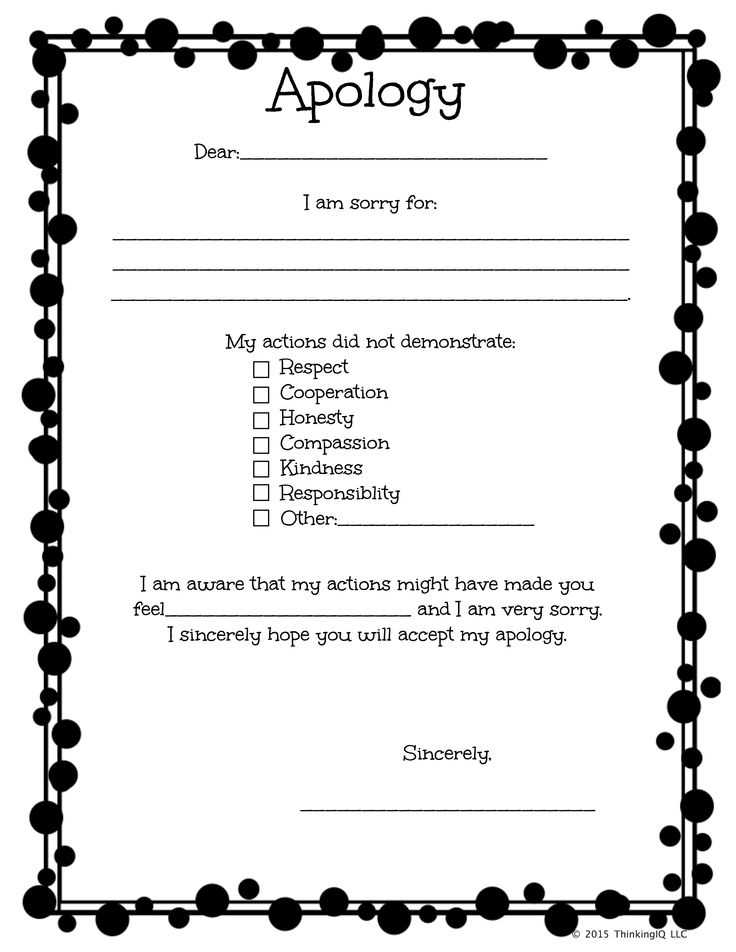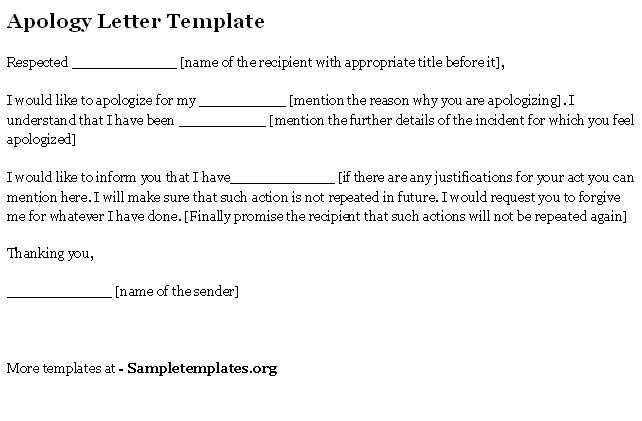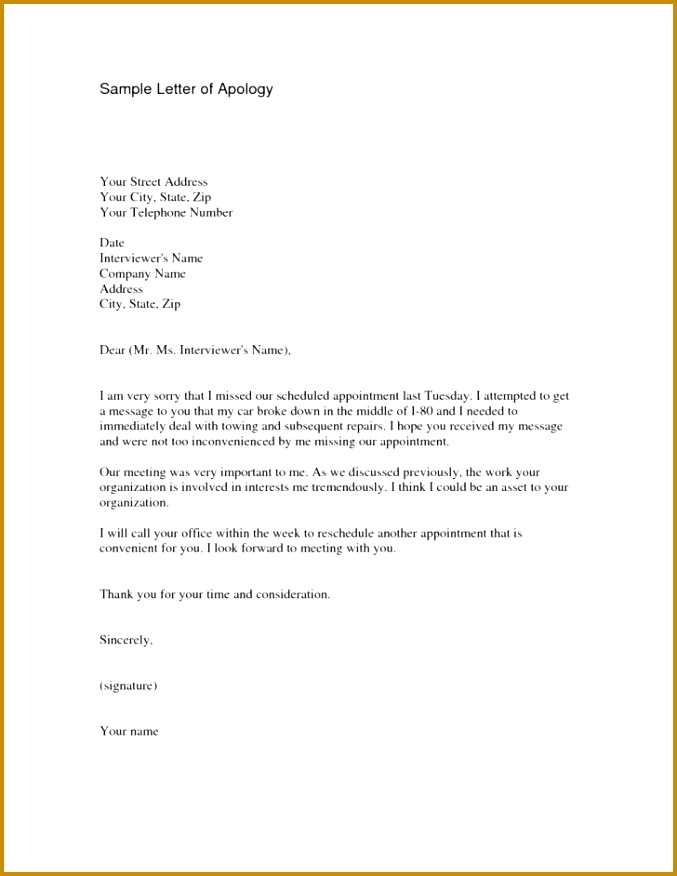Apology letter template for elementary students

Writing an apology letter helps students learn responsibility and empathy. An effective letter should be clear and sincere, acknowledging the mistake and offering a solution or promise for improvement. Use simple language and direct statements to convey your message in a respectful manner.
Begin by addressing the person you are apologizing to. A clear greeting like “Dear [Name],” sets a polite tone. Then, express regret for the specific action or behavior. Avoid generalizations or excuses. A phrase like “I’m sorry for [what happened],” directly addresses the issue without sidetracking the apology.
Next, explain why the action was wrong and how it affected others. It’s important to show understanding of the consequences, like “I know my actions hurt your feelings,” to demonstrate empathy. Offer a solution or a way to make up for the mistake, if possible. Finish by expressing your hope to improve things and keep a positive relationship moving forward.
End the letter with a polite closing, such as “Sincerely, [Your Name]”. This structure keeps the apology simple, genuine, and easy to understand. Encourage students to personalize their letters to reflect their true feelings, ensuring the apology feels authentic and heartfelt.
Apology Letter Template for Elementary Students
Begin by addressing the person you’re apologizing to, using their name. This shows respect and makes your apology more personal.
Start your letter by saying “I’m sorry” for what happened. Be clear about what you’re apologizing for.
Explain why the action was wrong. Be honest and straightforward, but avoid making excuses. This helps the other person understand that you recognize the mistake.
Offer a solution or explain what you will do differently next time. Show that you’re committed to improving your behavior.
End with a heartfelt statement, like “I hope you can forgive me.” Let the person know you value their feelings and your relationship with them.
- Example:
- Dear [Name],
- I’m sorry for not sharing my toy with you today. I know it made you upset, and that wasn’t my intention.
- I should have been kinder and thought about how you felt. Next time, I will make sure to share and play together.
- I hope you can forgive me. I don’t want to hurt your feelings again.
- Sincerely, [Your Name]
How to Start Your Apology Letter: Opening Sentences
The first sentence of your apology letter sets the tone for the entire message. To begin, directly acknowledge the mistake. This shows you’re taking responsibility and not avoiding the issue.
Be Clear and Direct

- “I’m sorry for not returning your book on time.”
- “I apologize for being late to class yesterday.”
Keep it simple and straightforward. Avoid vague statements that don’t directly address the situation. Starting your letter this way makes it clear that you understand the impact of your actions.
Express Regret Right Away
- “I feel bad about how I acted.”
- “I regret not being more careful.”
By showing genuine emotion from the beginning, you help the reader understand that your apology is sincere. Acknowledge how your actions may have made the other person feel, even if you didn’t intend to cause harm.
Key Phrases to Express Regret and Responsibility
Use clear and direct phrases to show you understand the situation and take responsibility. Start by acknowledging what happened and then express your feelings about it. Simple phrases like “I am sorry for what I did” can open the conversation. You want to show you understand how your actions affected others.
To take responsibility, use statements like “It was my mistake” or “I should have done better”. This shows you’re owning the situation and not passing blame. These phrases demonstrate accountability and maturity.
For emphasizing regret, try phrases like “I feel bad about what happened” or “I regret my actions”. These words help communicate that you care about the impact of your behavior.
If you need to make an apology after a misunderstanding, say “I misunderstood the situation” or “I did not mean to hurt you”. This clarifies that the hurt was not intentional, while still acknowledging the consequences of your actions.
Finally, end with a phrase that shows you want to make things right, like “I will try to be more careful next time” or “I’ll work to do better in the future”. This gives a sense of resolution and shows your commitment to improve.
How to Describe the Mistake and Its Impact
Be clear and direct when explaining the mistake. Acknowledge exactly what went wrong, whether it was forgetting a task, saying something hurtful, or making a poor decision. Avoid generalizing or blaming others–own the mistake. For example, instead of saying “I made a mistake,” specify: “I forgot to do my homework” or “I accidentally broke your toy.”
Then, explain how the mistake affected others. Did it cause someone to feel upset, make their day harder, or create extra work? For instance, “I understand that forgetting my homework made you frustrated because we were supposed to work together” or “Breaking your toy might have made you sad because it was special to you.” This helps the person know you understand the impact of your actions.
Being honest about the mistake and its effects shows that you are taking responsibility and are thinking about how others feel. Keep it simple and focused on the specific situation to make your apology more meaningful.
How to Offer a Solution or Make Amends
Offering a solution shows responsibility and a willingness to correct the situation. It’s key to focus on what can be done now to fix the issue and avoid making the same mistake again. Start by suggesting a concrete action you can take. For example, if you broke someone’s toy, offer to replace it or help fix it. Being clear about your commitment to fix the problem can help rebuild trust.
Next, offer a plan to ensure the problem doesn’t happen again. If you lost a friend’s book, for instance, promise to take better care of things in the future. Showing how you’ll avoid repeating the mistake shows that you’ve learned from the situation.
Lastly, make sure the other person feels heard. If they are upset, listen to their feelings without interrupting or defending yourself. Apologizing sincerely and offering a solution together creates space for reconciliation.
| Problem | Solution | Prevention Plan |
|---|---|---|
| Broken Toy | Offer to replace or fix it | Handle toys gently, ask before borrowing |
| Lost Book | Promise to replace or find it | Keep books in a safe spot, return on time |
| Spilled Drink | Help clean it up and offer to buy a new one | Be careful with drinks near electronics, use coasters |
Appropriate Tone and Language for Young Readers
Use simple, clear language that young readers can easily understand. Avoid complicated words or long sentences that might confuse them. Stick to familiar vocabulary that children commonly encounter in their daily lives. This helps keep their attention and makes the message feel accessible.
Be Friendly and Encouraging

Maintain a warm, positive tone throughout the letter. Children respond well to kindness, so use phrases that show you care and want to help them feel better. Phrases like “I’m sorry if I upset you” or “I hope we can be friends again” are gentle and reassuring, helping children feel safe and understood.
Keep It Simple and Direct
Focus on being straightforward without over-explaining. Stick to the main point, like saying sorry and expressing how you plan to make things better. This keeps the letter from being overwhelming and ensures the message is clear.
How to End the Apology Letter on a Positive Note
Finish your apology letter with a statement that shows you are looking forward to making things right. Focus on expressing your desire to improve and create a better relationship. Acknowledge that mistakes happen but let the reader know you’re committed to positive changes.
Be Honest About Your Intentions
Include a sentence about how you plan to prevent the same mistake from happening again. This shows that you’re actively thinking about the future and care about making improvements.
Express Gratitude
Thank the reader for their understanding. Gratitude can turn an apology into an opportunity for growth and can leave both you and the reader feeling better about the situation.
End the letter by offering an invitation for further communication if necessary. This keeps the door open for continued positive interactions.